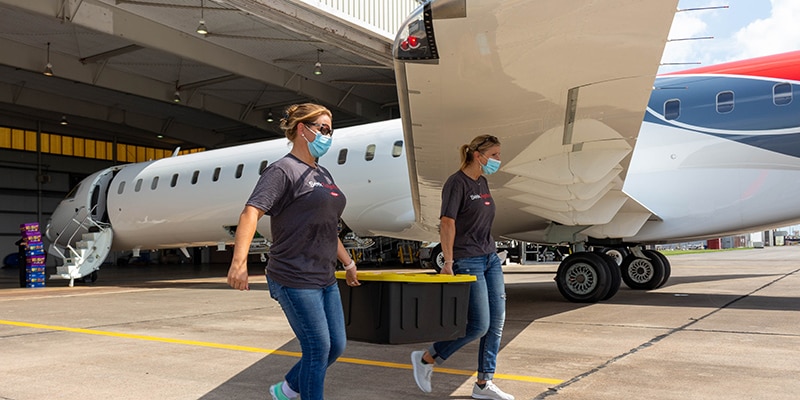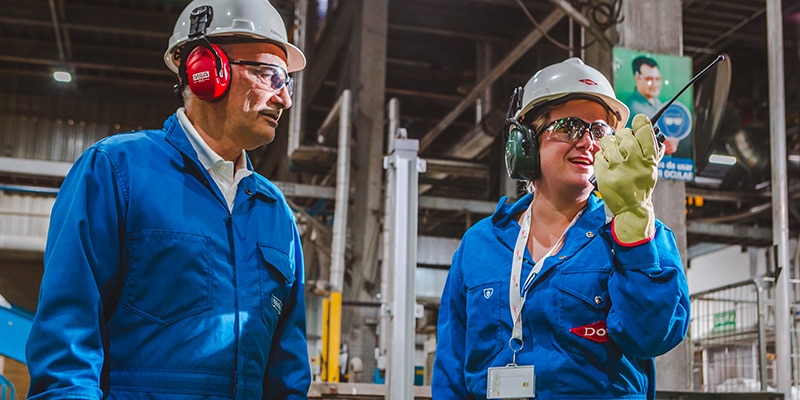(Business Wire) --(BUSINESS WIRE)--
FKT-Formenbau und Kunststofftechnik GmbH in Triptis, Germany, expanded its manufacturing capacity, adding a new production building with a two-bay, double-pitched photovoltaic (PV) membrane roof made with DuPont™ Elvaloy® KEE resins. The roof generates about 13,200 kWh per year of energy from the sun, reducing CO2 emissions by about 8000 kg/yr.
For many years now, the words photovoltaic (PV) and solar have been on everybody's lips. Until now, roofers have had to share solar work with other trades. However, the latest developments in this field include reliable and effective systems for full energy recovery that can be installed entirely by roofers.
Installing PV roofing systems thus becomes more cost-effective. Roof areas that have not previously been exploited for solar energy must meet certain requirements to obtain optimum energy yield. By collaborating with specialized manufacturers and processors as they carry out PV installations, roofers can rapidly acquire technical and sales experience with such systems.
Proven in Practice
A good model for such collaboration is provided by the PV roofing system commissioned in 2001 by FKT-Formenbau und Kunststofftechnik GmbH in Triptis. The company added a new production building with a two-bay, doublepitched roof. The roofing work and installation of the PV system were carried out by roofing specialist Rolf Heckert from Gera, using Evalon®-Solar, the world's first roofing membrane with integrated PV modules. The roofing is produced by alwitra Flachdachsysteme GmbH, Trier.
More Freedom for Roofers
With Evalon®-Solar, the roofing specialist installs the required roofing membrane and PV system in one operation. DuPont™ Elvaloy® KEE helps create the durable flexibility of the membrane. Because the PV modules are laminated to the roofing membrane, they can be adapted to any roof shape with no need for additional frames with upstands, heavy concrete plinths or gravel-filled valleys typically required with other PV systems.
Good Technical Service
Another advantage for roofers is the good technical service offered by alwitra. For the Triptis project, alwitra provided support from initial planning through installation. alwitra's technical service team worked closely with consulting engineers Elektroplanung Reich from Kleinpürschütz to determine and apply all the relevant data for installing the PV system.
Factors taken into account for the roof of the new production building were the roof area and geometry, interruptions such as skylights and domelights, partial shading by adjacent buildings at certain times of the day, the span direction of the profiled steel sheets and the required lightning conductor.
\"With the excellent technical support and a PV system that can be laid like a roofing membrane, I can concentrate on my skills as a roofing specialist\", explained Heckert.
Solar Energy System for Roofers
Besides ensuring the necessary technical properties, one consideration was paramount in the development of Evalon®-Solar: it must be possible for the PV system to be installed entirely by a roofer. To meet this requirement, alwitra supplies the EVALON®-Solar sheeting in functionally tested rolls with PV modules laminated to the roofing membrane and integrally attached solar cables and feed-throughs so that the complete system is ready for immediate installation and connection. The system can be installed like a conventional roofing membrane. The individual roofing strips can be fixed with mechanical fastening machines and efficiently welded at the overlaps with self-propelled hot-air welding equipment.
In this practical system, all the connecting cables are passed under the roofing and are therefore protected from the weather. It is not necessary to make holes in the roofing once installed or to connect up the PV system on the roof. Instead of this, the cables are passed through the load-bearing structure into the interior of the building. An electrician then connects them up in accordance with the directives and guidelines of the relevant power supplier.
Robust and Reliable
Just like the roofing membrane itself, the PV modules are designed to cope with the harsh day-to-day conditions on a building site. The flexible PV modules, comprising three layers of solar cells made from amorphous silicon, are fully weatherproof, transparent and encapsulated in a protective polymer. The surface of the modules is self-cleaning.
The three superimposed silicon layers each use different solar wavelengths, which increases efficiency and permits constant yields. The extremely light weight of Evalon®-Solar (only 4 kg per m2) also plays an important role. It is possible to dispense with virtually all the usual design measures to counter roof loads and wind uplift. For this reason, the world's first photovoltaic polymer roofing membrane can even be retrofitted on existing buildings.
Complete Installation by the Roofer
At Triptis, Heckert installed a total of 370.5 m2 of Evalon®- Solar on the south-facing roof areas. The remaining areas, amounting to some 820 m2, were covered with Evalon®-V roofing membrane. In this way, a PV system with a module surface area of 281.9 m2 and a nominal output of 16.6 kWp was installed. Because of the requirement to lay the roofing strips across the span direction of the profiled steel sheets, the longitudinal edges of the modules run with the slope of the roof from the ridge to the eaves. The individual strips were fixed mechanically to the ribs of the profiled steel sheets. Groups of 4 or 6 modules were connected to a mains inverter by the shortest possible route via the factory-installed solar cables that were loosely laid under the roofing membrane to ensure protection from the weather. Heckert passed these cables through the thermal insulation layer, vapor barrier and load-bearing layer into the interior of the building. EPDM cable feed-throughs with aluminum collars, forming an airtight connection to the vapor barrier and screwed to the load-bearing layer, ensured technical perfection down to the last detail. From the module connection to the cable feed-through, the cables were sunk 5 mm deep into the mineral fiber insulation so that they did not show up under the roofing. The individual roofing strips were hot-air welded together at the overlaps to ensure a reliable long-term seal. An electrician connected the cables to the inverter inside the building and tested and commissioned the PV system.
Conclusion
With the PV system installed at Triptis, some 13,200 kilowatt hours of energy can be generated from the sun per annum. This represents a reduction in CO2 emissions of approximately 8000 kilograms per annum. With this unique combination of a PV system and roofing membrane, all the work on the roof could be carried out by the roofer, which is important to ensure long-term reliability of the roof.
For more information about alwitra roofing made with Elvaloy® KEE
To learn more about alwitra roofing membranes made with Elvaloy® KEE, visit alwitra's web site.





